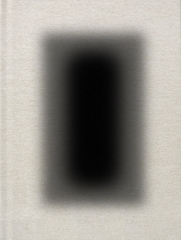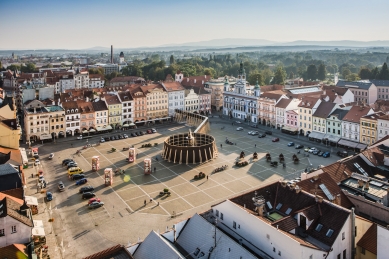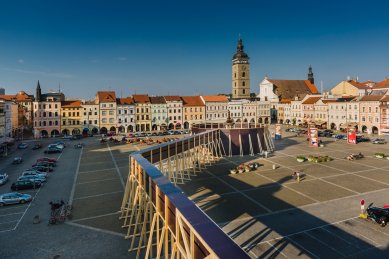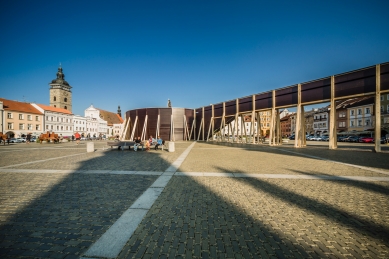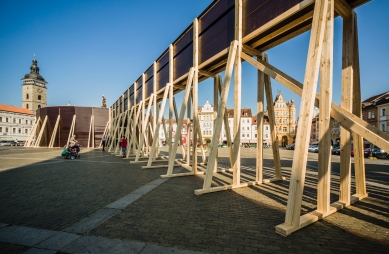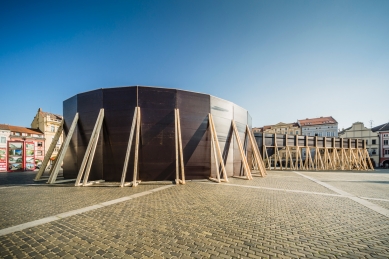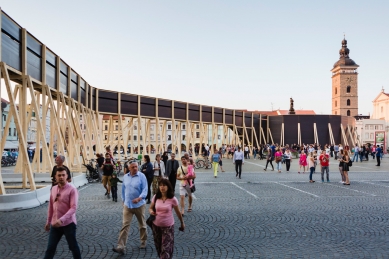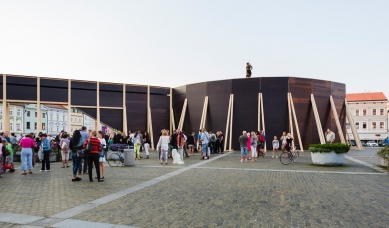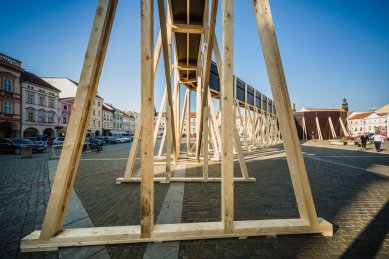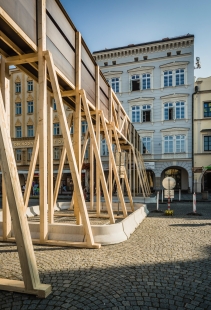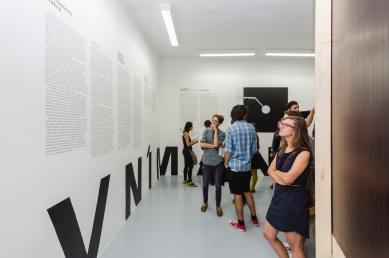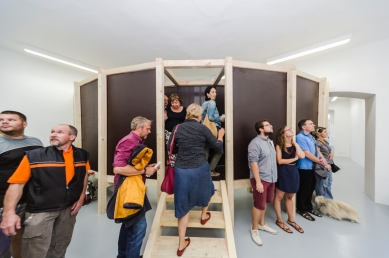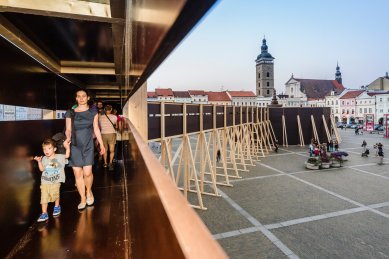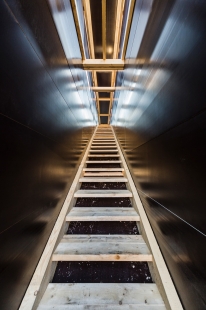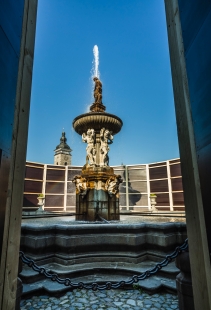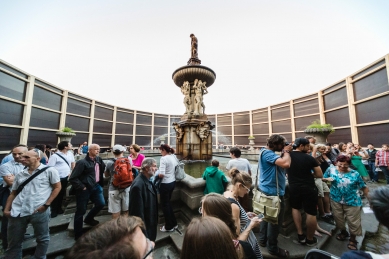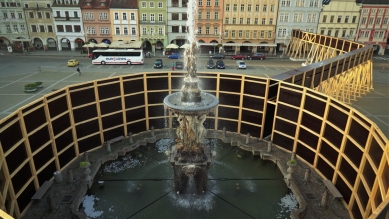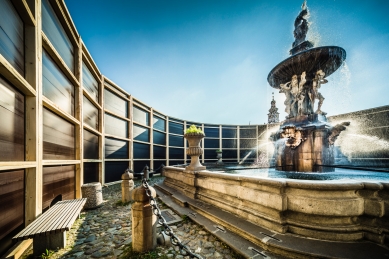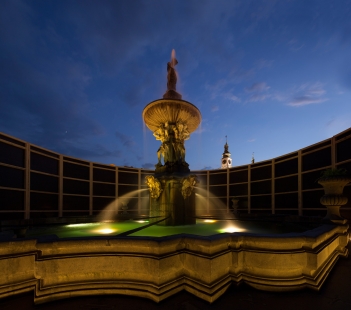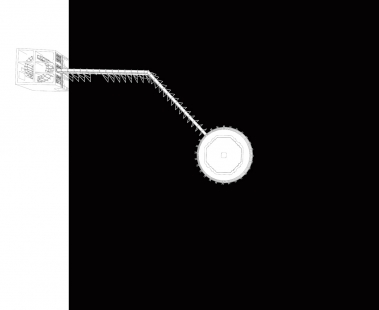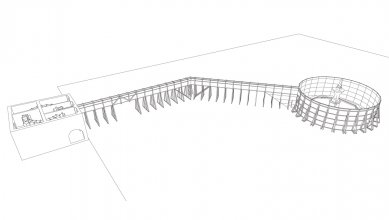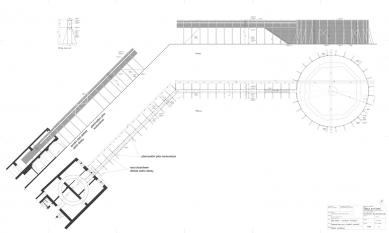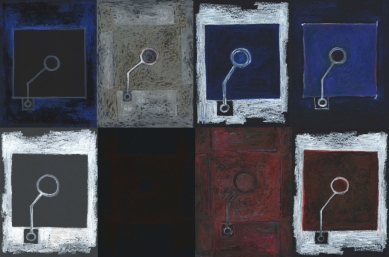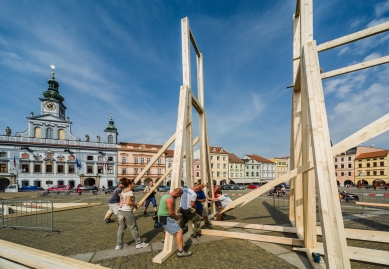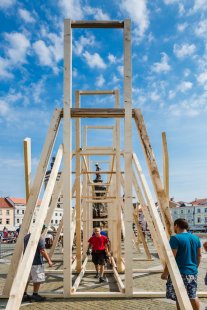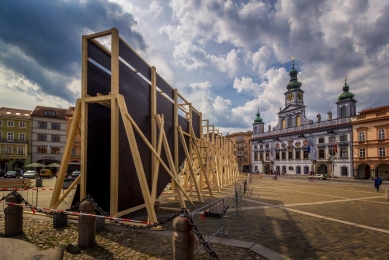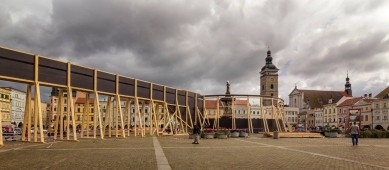
<translatetoeng>Perception</translatetoeng>

The project is a reflection on what we consider an important part and a dominant feature of public space, and how we perceive some hidden spaces that provide us with social and cultural enjoyment.
The Baroque Samson Fountain located in Přemysl Otakar II Square in České Budějovice is one of the largest of its kind in the country and represents a significant monument and symbol of the city. Its artistic quality is undeniable, and nowadays no one can imagine the square without this dominant feature. However, the question might be whether we perceive such dominants today only incidentally. We pass by them every day, and because their value is historically and spatially confirmed, we no longer think about the essence of this monument or its relationship to the generous square space.
In contrast, the spaces on the first floor of the House of Art, which in recent years have offered very attractive artistic experiences, are obscured from our view. The visitor unaware of the situation finds it difficult to locate the gallery. It is evident that a certain form of concealment of the gallery space can also be an advantage; however, the experience from the exhibition and any discussion about art and culture fades from our regular daily repertoire.
The project aims to highlight how we perceive, or rather do not perceive, dominants and hidden places that are not far from each other, are located in the center of events, and offer cultural enjoyment. The purpose should be to break our stereotypical perception of such values and to encourage reflection and discussion on these topics.
The Samson Fountain found itself for approximately three weeks in a circular space that both separated it from the square itself and created a calm background and intimacy that this dominant feature never had. Thus, the fountain was like a jewel in a gallery. The circular space was directly connected by a path with stairs to the first floor of the House of Art, where a circle appeared again, but in different contexts. The visitor could only move in the gallery space along the designated circular path and did not actually enter the free spaces of the gallery. The deliberate alienation of the fountain and the emphasis on the entrance to the House of Art through the window is the overall intent of the project. An interesting confrontation arises between things that seemingly have no connection.
This exhibition was not only based on its own artistic-architectural intervention but was also complemented by three debate evenings featuring guests from the ranks of experts, artists, architects, and politicians—a block of lectures and discussion programs for the public related to the history and present of the square and its use, as well as the relationship between contemporary art and architecture. Over 36,000 visitors saw the installation.
The Baroque Samson Fountain located in Přemysl Otakar II Square in České Budějovice is one of the largest of its kind in the country and represents a significant monument and symbol of the city. Its artistic quality is undeniable, and nowadays no one can imagine the square without this dominant feature. However, the question might be whether we perceive such dominants today only incidentally. We pass by them every day, and because their value is historically and spatially confirmed, we no longer think about the essence of this monument or its relationship to the generous square space.
In contrast, the spaces on the first floor of the House of Art, which in recent years have offered very attractive artistic experiences, are obscured from our view. The visitor unaware of the situation finds it difficult to locate the gallery. It is evident that a certain form of concealment of the gallery space can also be an advantage; however, the experience from the exhibition and any discussion about art and culture fades from our regular daily repertoire.
The project aims to highlight how we perceive, or rather do not perceive, dominants and hidden places that are not far from each other, are located in the center of events, and offer cultural enjoyment. The purpose should be to break our stereotypical perception of such values and to encourage reflection and discussion on these topics.
The Samson Fountain found itself for approximately three weeks in a circular space that both separated it from the square itself and created a calm background and intimacy that this dominant feature never had. Thus, the fountain was like a jewel in a gallery. The circular space was directly connected by a path with stairs to the first floor of the House of Art, where a circle appeared again, but in different contexts. The visitor could only move in the gallery space along the designated circular path and did not actually enter the free spaces of the gallery. The deliberate alienation of the fountain and the emphasis on the entrance to the House of Art through the window is the overall intent of the project. An interesting confrontation arises between things that seemingly have no connection.
This exhibition was not only based on its own artistic-architectural intervention but was also complemented by three debate evenings featuring guests from the ranks of experts, artists, architects, and politicians—a block of lectures and discussion programs for the public related to the history and present of the square and its use, as well as the relationship between contemporary art and architecture. Over 36,000 visitors saw the installation.
Jan Šépka
The English translation is powered by AI tool. Switch to Czech to view the original text source.
3 comments
add comment
Subject
Author
Date
Ne.
Ivoš
03.11.16 11:43
důvod
tzdvihal
04.11.16 09:44
Ale ano!
Honza
07.11.16 07:06
show all comments


